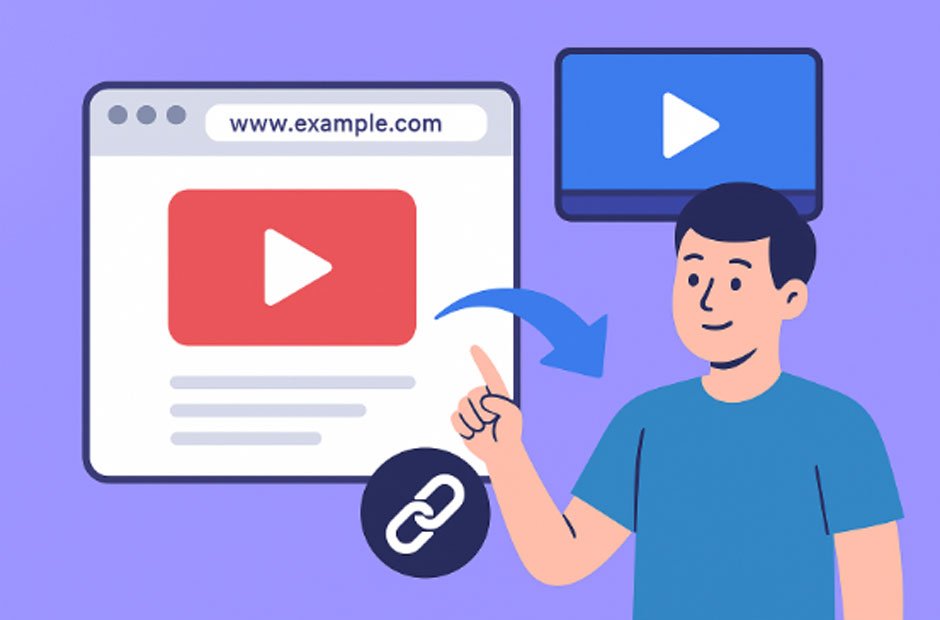Creating engaging video content no longer requires advanced skills or endless editing. With AI-powered tools, you can transform almost any link into a polished video in minutes. By pasting a product page, blog, or article link into the right platform, you can instantly generate videos complete with visuals, background music, subtitles, and even voiceovers. The concept of url to video isn’t just convenient, it’s changing the way you approach content creation.
If you’re managing an online business, working in education, or growing a personal brand, this innovation gives you the ability to share information in the format audiences love most: video. From scaling e-commerce businesses looking to showcase products to digital marketers aiming to capture attention on social media, this process brings a new level of personalization and efficiency to your content strategy.
Why Turning Links into Videos Matters
As an online creator or business owner, you’ve likely noticed how quickly video content dominates social feeds. Whether it’s a 30-second product demo or a two-minute explainer, video consistently outperforms static text and images. Audiences retain more information, spend more time watching, and are more likely to take action after viewing a video.
That’s why being able to turn a product URL or article into a ready-to-publish video has such practical value. Instead of writing long descriptions, you can generate a video with visuals that highlight product features, subtitles for accessibility, and even background music that matches your brand tone. For e-commerce, this means you can create multiple product-focused clips at scale, saving hours of effort while boosting customer engagement.
How AI Simplifies the Process
AI-driven platforms take your link and analyze its content, images, text, and structure. After that, they automatically put together a video that encapsulates the page. Within minutes, you can have a short, polished video ready to share across platforms.
For example, imagine pasting a product link from your store into an AI tool. The system could generate a UGC-style clip that highlights the product image, pulls in customer reviews, and overlays text with the product’s key benefits. You could even edit the video using text prompts, changing the tone, visuals, or style with a few quick inputs. This workflow also supports privacy control, allowing you to decide where and how your generated videos are shared.
This level of automation doesn’t just save you time; it gives you the ability to consistently produce video content without needing advanced editing skills. It also ensures your material can be easily repurposed for blogs, social channels, and campaigns, helping you reach wider audiences with less effort.
Bringing URL-to-Video to Life
When it comes to putting this into practice, platforms like Invideo AI have made the process accessible for anyone. For instance, you can use its platform’s url to video feature to transform a blog post into an engaging explainer video or turn a product link into a marketing clip with voiceover and subtitles included. The result is a versatile video that feels professional yet can be created in just minutes. This approach makes video creation less about technical skill and more about creativity and strategy, something you can easily manage.
Alongside this, many free AI video app options provide flexibility, letting you experiment with different formats and content types before scaling your strategy. Whether you’re producing educational tutorials, promotional ads, or quick updates for social media, these apps help streamline video production so you can focus on growing your audience or business.
Personalization and Engagement
Personalization plays a huge role in today’s online interactions, and video is no exception. AI lets you tailor your videos to fit your audience’s preferences, whether that’s adding subtitles for accessibility, customizing music for tone, or emphasizing certain visuals. For e-commerce businesses, personalized videos based on customer interests or browsing behavior can significantly improve engagement and conversions.
AI management systems further enhance this by allowing you to analyze performance, track which types of videos resonate most, and adjust your content strategy accordingly. By continuously learning from your audience’s behavior, you can make smarter decisions about what kind of videos to create next.
Repurposing Content with AI
Another benefit of converting links into videos is the ability to repurpose existing content. If you’ve written a long blog post, instead of relying solely on readers to engage with the text, you can use AI to create short video highlights. If you’ve hosted a webinar, you can turn key moments into multiple shorter clips for social media. AI even allows you to generate product-focused images or snippets, making it easier to diversify your content output.
For businesses, this repurposing is invaluable. It means the same piece of content can live across your website, social platforms, and marketing campaigns, each time in a format best suited to the platform and its audience.
A Simple Path Forward
Ultimately, the ability to convert links into videos represents a major shift in how you think about content creation. Instead of complex editing processes, you now have access to tools that do the heavy lifting for you. From a single URL, you can generate a polished video with visuals, subtitles, music, and narration, all tailored to your goals.
In conclusion, whether you’re an educator creating learning material, a marketer driving brand awareness, or a business owner showcasing products, the power of url to video can’t be overlooked. By turning your existing links into engaging, shareable videos, you’re able to connect with audiences more effectively and scale your content strategy with ease. With AI making the process simple, you can spend less time on technical work and more time focusing on creativity and results.













